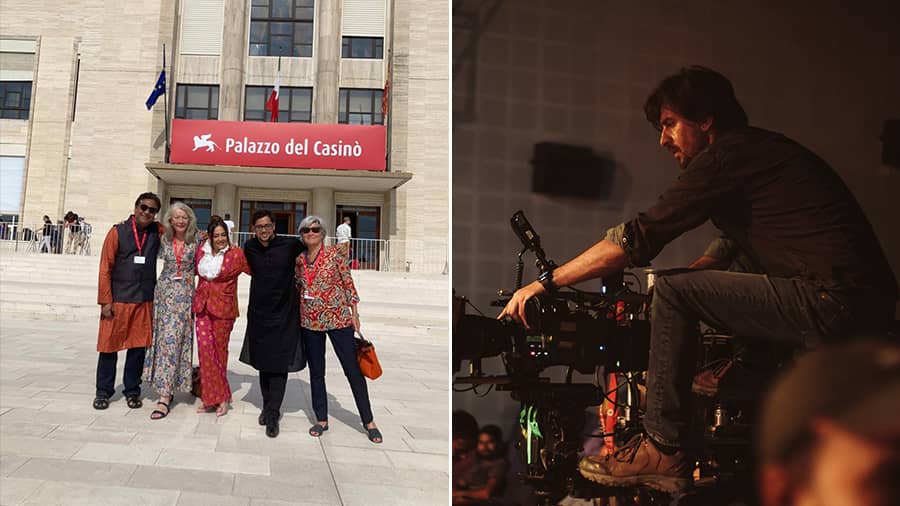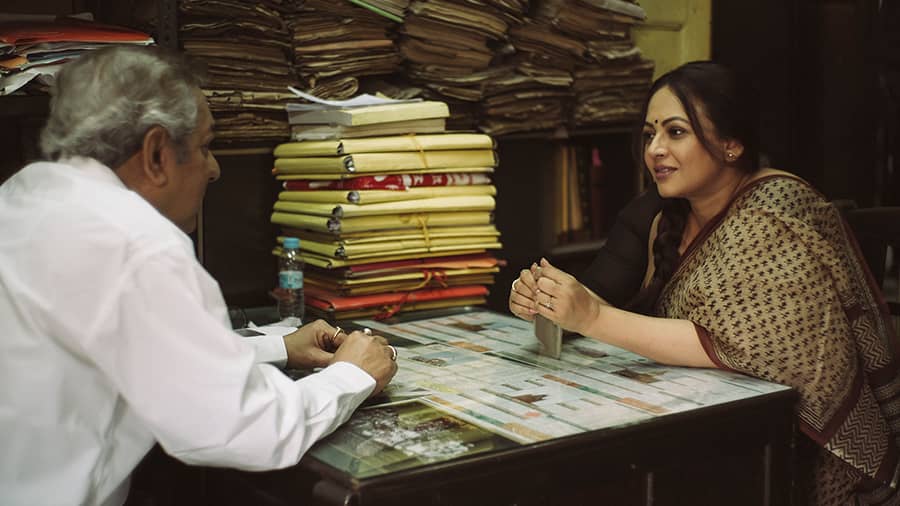There is no formula to film financing. It depends on the country producing it, the story, and attached cast and crew, among many other factors.
Mainstream Indian cinema is straightforward. A director, with the help of a production company, develops and packages the script and pitches it to studios. A studio then finances the film. Once made, it’s distributed by a distributor (sometimes the studio is the distributor), before the rights are acquired by streaming companies. Hollywood largely follows a similar pattern.
But this isn’t the only way. Studios rely on statistics to make decisions — where should they invest, what should the ideal budget be, what can be the distribution model, etc. Often, because of that, a lot of innovative voices get suppressed as they don’t fall in the boxes of existing statistics.
Different ways in which filmmakers in India get financiers
One way to tackle this problem is to get private investors on board for your project — individuals with money who want to finance your film and get a share of the profit. There are plenty in the country. In a recent interview of Anurag Kashyap with film critic Baradwaj Rangan, Kashyap says because he’s from India, a country known for its obsession and loyalty towards movies, and he’ll not find it difficult to finance his films as his European contemporaries or seniors. While this statement may seem arrogant for the uninitiated, it’s actually quite true. In a country with a booming film and television industry, it’s worth asking — who’s paying for all this?
There’s another way a lot of filmmakers are financing their films — especially the new wave of Indian independent filmmakers. It’s the international co-production model. International co-productions aren’t new. But before we dive into how they work, it’s important to note that there are broadly two different types of international co-productions from India’s perspective — a majority co-production, and a minority co-production. Majority are the ones where majority of the financing comes from India, while minority is where majority of the funding comes from outside of India.
An early instance of a co-production is the UK/India co-produced 1982 film, Gandhi, directed by Richard Attenborough, where the majority financing was by UK-based production companies and financiers, while India supported a substantial but minor portion of the total budget. Then there was Salaam Bombay in 1988, Mira Nair’s debut which won her the Camera d’or at Cannes Film Festival before getting an Academy Award nomination. Indian co-productions have a long history. But the recent wave of increasing number of Indian films going this route is worth studying.
How the international co-production model works
I’m a producer for a company, For Films, by Aditya Vikram Sengupta that had last produced the Indian/French/Norwegian film Once Upon A Time In Calcutta. It’s a vague statement — Indian, French and Norwegian co-production, which could mean a number of things. What it meant for us is that the financing came from three different countries. The majority of the financing was raised from India by Wishberry Films, in association with For Films, while the rest of the financing was from cultural funds in France and Norway — CNC and Sorfond, respectively.

(L-R) During the photocall of Once Upon A Time In Calcutta’s premiere at Venice International Film Festival; Gokhan Tiyaki during the film’s production.
So why are cultural funds in Europe giving money to foreign production at all? There are various reasons. For example, CNC has strict regulation that states that 50 per cent of the grant money needs to be spent in France itself. This allows employment in their home country, while also allowing room for cultural exchange and international collaborations. This also allows distribution of foreign films, supported by them, in France.
Sorfond has a different ambition. It aims to empower the voices of artists in developing nations and allow them to tell stories that they wouldn’t have been able to otherwise, in their own country. Sorfond doesn’t have any spending requirement, a rarity. These are just two examples. To apply for these two funds, we needed co-producers from these countries — Catherine Dussart of France, and Ingrid Lill Høgtun of Norway — who could apply to these grants on our behalf.
Our next film was supposed to be the now-cancelled Birthmark, which would’ve been a five-country co-production between India, France, Norway, Luxembourg and Denmark. This reunited us with our previous co-producers, Catherine and Ingrid, while allowing us to connect with Beofilm of Denmark and Les Film Fauves of Luxembourg.
Denmark’s funding body, Danish Film Institute, and Luxembourg’s Film Fund Luxembourg had similar spending requirements. Fifty per cent of the total fund needed to be spent in Luxembourg. For Denmark, the funding is accessible as long as one spends the entire money in Denmark — restricting the spend to only post-production or talent remuneration. The motivation for these two funds are similar to that of CNC — fostering employment in home countries while allowing international collaborations, cultural exchange and diplomatic relations.
The crucial role that NFDC plays
Aditya, who had made the critically acclaimed 2014 film Asha Jaoar Majhe, doesn’t share the same optimism for film financing as Kashyap. “It’s very difficult to finance films in India if you don’t fit into a model. Studios are financing films based on what they think works, but they’re clearly not working. The moment you try to make a film that has a different treatment or narrative style, it’s rejected by film financiers. This is why access to these international funds are extremely important for independent filmmakers,” he says, before stressing on the importance of setting up a national body that could be equivalent to the cultural funding bodies in Europe.
We do have a national body — National Film Development Corporation of India (NFDC). But because of the scale of film production in India across languages and states, the scope of support from NFDC is understandably limited.
“I wish NFDC was more involved and regular in film financing cycles by opening applications to both upcoming and established filmmakers who could pitch varied ideas for funding. It’s an extremely important body and has done good for Indian cinema, but it needs to reach out more and be more hands on if the institution wants to be in the forefront of the new wave of Indian cinema. It’s the only way in which different kinds of films can be made. This will inspire fellow filmmakers and show financiers and producers newer ways. People are stuck and desperate for funding,” Aditya adds, whose Once Upon A Time was a part of NFDC’s Film Bazaar.
NFDC’s Film Bazaar, where films are discovered
NFDC hosts the Film Bazaar every year around November — a film market where delegates from across the country and world fly down to Goa to network, meet and take part in various in-person activities. The co-production market within the Bazaar is a networking pad that allows Indian filmmakers to meet and pitch their projects to producers and financiers both domestic and foreign. Films such as Newton (Amit V. Masurkar), the upcoming Eka (Suman Sen), Lipstick Under My Burkha (Alankrita Shrivastava), Titli (Kanu Behl) and Manto (Nandita Das) were all part of the Bazaar at one point or the other.
The Bazaar also has other labs such as the Screenwriter’s Lab and the Work-In-Progress Lab where films such as Ritesh Batra’s The Lunchbox, Chaitanya Tamhane’s Court, Irfana Majumdar’s Shankar’s Fairies, Ajitpal Singh’s Fire In The Mountains and Nitin Lukose’s Paka (River of Blood) were first discovered.
It’s worth acknowledging NFDC’s singular mission to diversify cinematic voices in the country and help them reach the widest possible audience internationally. But despite its efforts to be a meeting ground for filmmakers, it is yet to make the financing process for alternative films relatively hassle-free. I, however, remain optimistic and hopeful.
That said, NFDC has incentives for official co-productions that are recognised by the Ministry of I&B under one of India’s official bi-lateral co-production treaties. Under the incentive, the body reimburses up to 30 per cent of qualifying co-production expenditures, upto INR 2,00,00,000 — an amount that is quite substantial for an independent filmmaker. This incentive is accessible as long as there is an Indian producer involved, and they’re the one applying. NFDC is also opening up support for foreign films that desire to be shot in India, a model quite similar to cultural grants in other countries such as the New Zealand Film Commission. This was announced at the Cannes Film Festival earlier this year.
International grants are helping new filmmakers make a mark
Independent Indian filmmakers still look outside for financing even when it comes to script development and research. Tamhane’s Court won the Hubert Bals Script and Project Development Fund in 2012 before it won its Venice glory in 2014. Hubert Bals is awarded by the same body that runs the prestigious International Film Festival of Rotterdam. The other awardees include Prantik Basu’s Dengue, Payal Kapadia’s All We Imagine As Light, Amit Dutta’s A Room On A Tree and Dominic Sangma’s Rapture.
Post-production support is more in numbers. Doha Film Institute’s post-production fund allows applicants across the globe who’re first- or second-time directors to apply. Switzerland’s Vision Sud Est also has a category for post-production support, without any spending requirement, similar to Busan’s Asian Cinema Fund’s category where people of Asian origin and Asian narratives are welcomed to apply. Mariam by Arvind Pratap, starring Chitrangada Satarupa, received the support this year and had its world premiere at the Busan International Film Festival in October.
Indian filmmakers are taking advantage of these grants. Ali Faizal and Richa Chadha’s maiden production Girls Will Be Girls by debutante Suchi Talati received the CNC’s Cinema du Monde grant last year. Payel Kapadia’s sophomore feature, All We Imagine As Light, received the Film Fund Luxembourg. These are just two among many that are slowly making a mark.
The upside and downside of international co-productions
International co-productions have many advantages. Firstly, it allows you to collaborate with crew members of other countries. A feeling of companionship and appreciation grows between professionals in the same field across borders. Secondly, getting a grant from one of the prestigious funding bodies allows your projects to be known among festival curators and distributors way before its completed, or even started. Having these institutional bodies attached to a film adds to its credibility and allows the people concerned to take the film seriously. It’s all about how you want to position your film. At the end of the day, it’s about branding as much as it is about the film itself.
There’s always downsides to things. Film financing through co-production grants takes far longer than traditional studio financing. Secondly, the films granted support by the institutions often fit into the Eurocentric narrative or aesthetic expectations. There’s far less diversity in the kind of films being awarded by these grants. This is particularly strange considering India has a huge diversity within its film industry. The narratives don’t only differ across states but also across class and faith. To sort of create a monolithic treatment of films across states and languages that cater to European sensibilities is doing injustice to our diversity.
But this is the state of film financing in India today. You go the studio route; if it doesn’t fit their statistical mould, you go to private investors. If it’s too adventurous for them, you look at international co-productions. And if your film doesn’t fit their mould, you are on your own.
So, it’s of prime importance to have a structured independent film financing institution in the country that can fuel the diversity in our stories — stories that will be judged solely on their and script. That is perhaps when the new wave can truly take shape and flourish.










